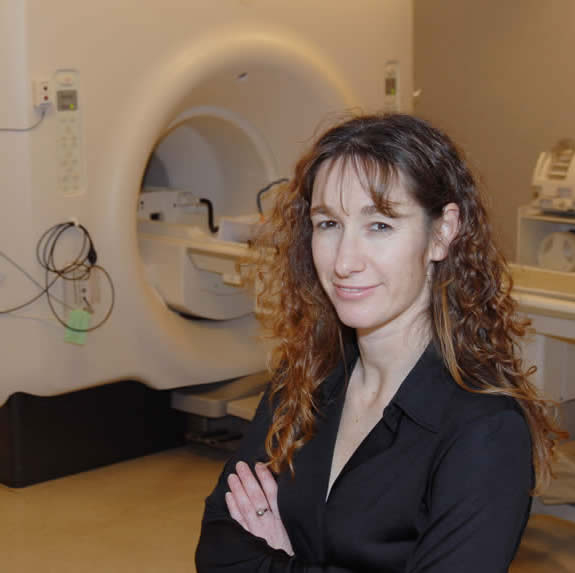Research
My
research seeks to understand the the neural
basis of visual
perception and categorization, using multimodal methods including:
fMRI,
quantitative MRI, diffusion weighted imaging, behavioral, and
computational methods. The ultimate goal is linking brain activations and computations to human
perception.
We are particularly curious about the relation
between human brain
structure, function, & behavior, which has been triggered by
our discoveries of striking structural-functional
regularities in human visual cortex that hadn't been previously
predicted. For example, tertiary sulci such as the mid
fusiform sulcus predict the location of functional regions such as mFus-faces
(a region involved in face
recognition), and the distribution of white matter bundle endpoints
predicts reading-related
brain activations. These intriguing findings led us to ask: How
does the underlying microarchitecture
and connectivity
constrain brain function? What may be the computational
utility of functional-structural coupling in the brain?
We are
also fascinated by the development of the human brain during infancy
and childhood. In particular, we seek to understand how the development
of brain
microstructure and brain
function enable better visual
recognition from childhood to adulthood. We have discovered that cortical
myelination during infancy and childhood plays an
important role in microstructural brain development. Interestingly,
brain development is not always linear: we discovered that cortical
representations of limbs are recycled to face and word representations
during childhood development.
Additionally,
we are developing novel computational encoding models of the visual
system using spatial
and temporal
neural population receptive fields models. These models not only
predict neural responses to new stimuli but also explain basic visual
phenomenon that have been elusive for decades. Such as, why are people
better at recognizing upright than
upside-down faces? How does attention
make your perception better?
Teaching
Undergraduate
Courses
Psych 30:
Introduction to Perception (Fall 2020)
Graduate Courses
Psych
207: Professional Seminar for First-Year Ph.D. Graduate Students
(Fall 2021)
Psych
250/CS 431: High Level Vision From Neurons to Deep Neural Networks
(Win 2021)
Psych
204b: Human Neuroimaging Methods (Spr
2020)
Psych
284: Mapping the human visual system (Win 2020)
Psych
206: Cortical Plasticity (Win 2018)
|
|

Kalanit
Grill-Spector, Ph.D
Susan S. and William H. Hindle Professor
Chair, Department of Psychology
Center for Neurobiological Imaging board
Wu Tsai Neurosciences Institute
Stanford University
e-mail: kalanit @ stanford.edu
|